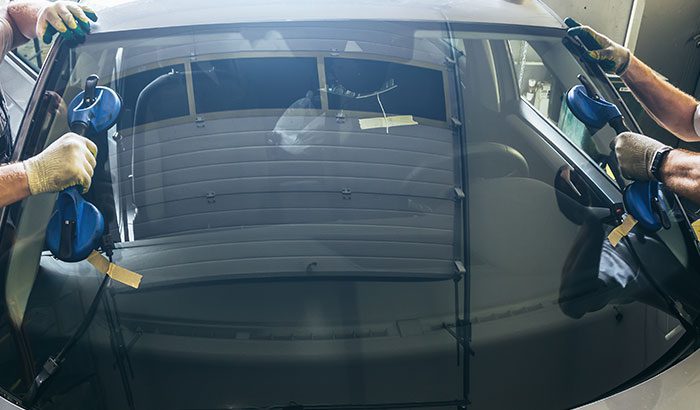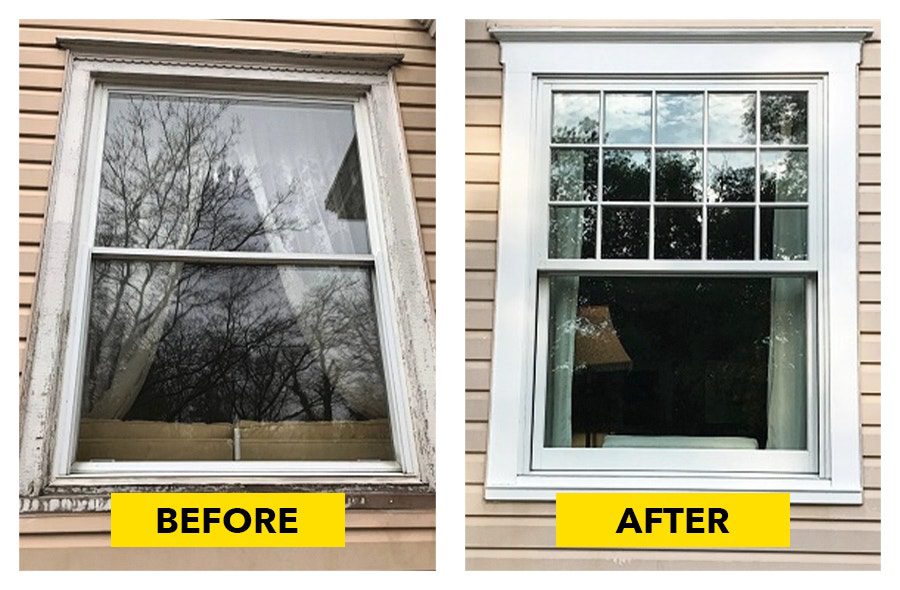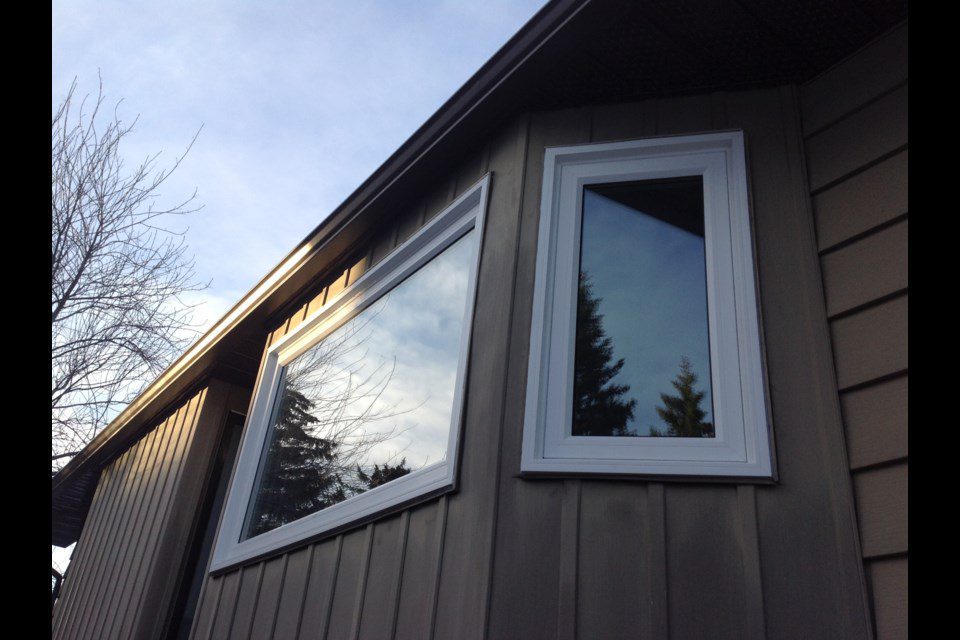Window Frame Inspections: The Ultimate Guide to Ensuring Structural Integrity

Window frame inspections are crucial to assess the condition and stability of the frames. These inspections help identify any structural issues and potential sources of leaks or drafts, ensuring proper maintenance and energy efficiency.
Additionally, regular window frame inspections can prevent long-term damage and the need for costly repairs or replacements, improving the overall lifespan and performance of your windows.
Importance Of Regular Window Frame Inspections
Regular window frame inspections are essential to maintain the integrity and functionality of your windows. By identifying and addressing issues early on, you can prevent further damage and save on costly repairs in the long run. Keep your windows in tip-top shape with regular inspections.
Regular window frame inspections are essential for maintaining the overall quality and efficiency of your windows. By inspecting your window frames periodically, you can detect any potential issues or damages early on and take appropriate actions to prevent further problems.
In this section, we will explore the importance of regular window frame inspections and highlight the benefits, problems that can occur without inspections, and common issues found during these inspections.
Benefits Of Regular Inspections:
- Identification of minor issues: Regular inspections allow you to catch small problems with your window frames before they escalate into larger, more costly repairs. This proactive approach helps save both time and money.
- Enhanced energy efficiency: Inspections can reveal any gaps or cracks in the window frames that can cause air leakage, resulting in energy wastage. By addressing these issues promptly, you can maximize your home’s energy efficiency and save on utility bills.
- Prolonged lifespan of windows: Through inspections, you can ensure that your window frames are in optimal condition, effectively extending the lifespan of your windows. Proper maintenance and timely repairs will help prevent premature window replacements.
- Improved security: Inspecting window frames allows you to identify any vulnerabilities or weaknesses that can compromise the security of your home. By rectifying these issues, you can enhance the safety of your property.
Problems That Can Occur Without Inspections:
- Water leaks: Without regular inspections, you may be unaware of any water infiltration around your window frames. This can lead to water damage, mold growth, and even structural issues over time.
- Decreased energy efficiency: Damaged or poorly sealed window frames can let air escape or enter, resulting in energy loss. This can lead to increased heating or cooling costs and a less comfortable interior environment.
- Reduced functionality: Over time, window frames can experience wear and tear, hindering their proper operation. Without inspections, you may not notice issues such as damaged hinges, broken latches, or sticking mechanisms, impacting the functionality of your windows.
- Structural damage: Neglecting window frame inspections can allow underlying structural issues to worsen over time. This can lead to compromised stability and integrity, potentially affecting the entire window system and even the adjacent walls.
Common Issues Found During Inspections:
- Cracked or warped frames: Exposure to weather elements, temperature fluctuations, and age can cause window frames to crack or warp. These issues can compromise the structural integrity of the frame and impact the window’s performance.
- Faulty seals or caulking: Insufficient or deteriorating seals around window frames can result in air and water leakage. This can contribute to energy loss, moisture damage, and potential water infiltration.
- Decay or rot: Wooden window frames are susceptible to decay or rot, especially if not properly maintained. Regular inspections can help identify areas of decay and prompt necessary repairs or treatments.
- Insect or pest infestation: Damaged or poorly sealed window frames can provide entry points for insects and pests, creating potential infestation problems. Inspections can help detect signs of infestation early, allowing for prompt pest control measures.
Regular window frame inspections offer numerous benefits, including early detection of issues, enhanced energy efficiency, prolonged lifespan of windows, and improved security. Without inspections, problems such as water leaks, decreased energy efficiency, reduced functionality, and structural damage can occur unnoticed.
During inspections, common issues like cracked frames, faulty seals, decay or rot, and pest infestation can be identified and addressed promptly. By prioritizing window frame inspections, you can ensure the longevity and optimal performance of your windows.
Conducting A Visual Window Frame Inspection
A visual inspection is crucial for assessing the condition of window frames. By conducting this inspection, you can identify any signs of damage or deterioration, enabling timely repairs and maintenance to ensure the longevity of your windows.
Visual Window Frame Inspection
When it comes to maintaining the structural integrity and energy efficiency of your windows, conducting a visual window frame inspection is essential. This inspection allows you to identify any issues or damage that may need to be addressed. In this section, we will guide you through the process of conducting a visual window frame inspection.
So let’s dive in and start preparing for the inspection.
Preparing For The Inspection:
Before starting the inspection, gather the necessary tools and equipment such as a flashlight, ladder (if needed), gloves, and safety glasses. Take note of the following points to ensure a smooth inspection process:
- Clear your schedule to give yourself ample time to thoroughly inspect each window frame.
- Familiarize yourself with the common signs of window frame damage, such as rot, cracks, or water stains.
- Ensure proper lighting during the inspection by either conducting it during daylight hours or using a flashlight to illuminate the areas around the windows.
Now that you’re ready, let’s move on to examining the exterior of the window frame.
Examining The Exterior Of The Window Frame:
The external part of a window frame is exposed to various environmental elements. It’s crucial to examine it closely for signs of damage. Here’s what you should look out for:
- Inspect the overall condition of the frame, checking for any visible signs of decay, such as wood rot or metal corrosion.
- Pay attention to the paint or finish on the frame. Look for any chipping, peeling, or discoloration, as this could be a sign of moisture-related issues.
- Check the exterior joints where the frame meets the surrounding wall. Look for any separation or gaps that may indicate potential water or air leakage.
- Carefully inspect the caulking or sealant around the frame. If it appears cracked or deteriorated, it may need to be replaced to ensure proper insulation and weatherproofing.
Make sure to take note of any issues or concerns you encounter during this examination. Let’s move on to the next step: checking for signs of water damage.
Checking For Signs Of Water Damage:
Water damage is a common issue that can affect the window frames, leading to further complications if left unaddressed. Here’s what you should pay attention to during the inspection:
- Look for water stains or discoloration on the interior and exterior surfaces of the frame. These can indicate past or ongoing water intrusion.
- Examine the nearby areas for mold or mildew growth, as they thrive in moist environments and can be a sign of hidden water damage.
- Inspect the window sills for any soft spots or areas where the wood may feel damp. These could signify water penetration or trapped moisture within the frame.
Identifying and addressing water damage early on can help prevent further deterioration and potential costly repairs. Finally, let’s move on to the last step of the inspection: identifying cracks or gaps in the frame.
Identifying Cracks Or Gaps In The Frame:
Cracks or gaps in the window frame can compromise the structural integrity and energy efficiency of your windows. During the inspection, keep the following points in mind:
- Inspect the frame for any visible cracks, both on the exterior and interior surfaces. Pay attention to areas near the corners and joints, as these are prone to developing cracks.
- Check for gaps or separations between the frame and the surrounding wall. These openings can allow air and moisture to seep into your home, resulting in energy loss and potential water damage.
- Run your hand along the frame to feel for any irregularities or gaps that may not be easily visible. This tactile examination can help detect hidden cracks or gaps that need attention.
By identifying cracks or gaps in the window frame early on, you can take the necessary steps to repair and maintain the structural integrity of your windows.
Remember, conducting a visual window frame inspection is a proactive approach to preserving the condition of your windows. By following these guidelines and addressing any issues promptly, you can ensure that your windows remain functional, energy-efficient, and aesthetically pleasing for years to come.
So grab your equipment, start inspecting, and give your windows the attention they deserve.
Assessing Window Frame Materials And Construction
Window frame inspections involve assessing the materials and construction of the window frame. By carefully examining the window frame’s construction, it is possible to determine the quality of the materials used and identify any potential issues that may need to be addressed.
When it comes to window frame inspections, one crucial aspect to consider is the quality of the frame materials and construction. Different types of window frame materials offer varying benefits and drawbacks, making it essential to evaluate them properly. Let’s explore the various options and assess their pros and cons:
Different Types Of Window Frame Materials
- Vinyl:
- Highly popular due to its affordability and low maintenance requirements.
- Offers good insulation properties, preventing heat loss and reducing energy costs.
- Resistant to rot, mildew, and pests, making it suitable for various climates.
- However, vinyl frames may fade or become brittle over time, affecting their aesthetic appeal and durability.
- Wood:
- Known for its classic and timeless beauty, wood frames enhance the overall aesthetics of any space.
- Provides excellent insulation, reducing heat transfer and maintaining a comfortable indoor temperature.
- With proper care and maintenance, wood frames can last for many years.
- However, they may require regular upkeep, including painting, staining, and sealing to prevent warping or rot.
- Aluminum:
- Offers strength and durability, making it suitable for large window openings.
- Provides more glass surface area due to its slim frame design.
- Low-maintenance material that resists corrosion and requires minimal care.
- However, aluminum frames are not as energy-efficient as other materials, as they conduct heat and cold rapidly.
- Fiberglass:
- Known for its superior strength, fiberglass frames are highly resistant to weathering and expansion.
- Offers excellent insulation properties, helping to reduce energy costs.
- Requires minimal maintenance, as it does not warp, rot, or corrode.
- However, fiberglass frames tend to be more expensive than other materials.
Pros And Cons Of Each Material
- Vinyl:
: Affordability, low maintenance, good insulation properties; potential for fading or brittleness over time.
- Wood:
: Classic beauty, excellent insulation, longevity with proper maintenance; requires regular upkeep to prevent warping or rot.
- Aluminum:
: Strength, slim frame design, low-maintenance material; less energy-efficient, conducts heat and cold.
- Fiberglass:
: Superior strength, weathering and expansion resistance, excellent insulation; higher cost compared to other materials.
Evaluating the quality of window frame construction is equally important. Here are some factors to consider:
- Look for precise and secure corners, ensuring a tight fit.
- Check for even spacing between the frame and the wall, avoiding any gaps or misalignments.
- Inspect the joints and welds for strength and proper sealing.
- Examine the window sashes for smooth operation and airtightness.
- Assess the weatherstripping and seals for wear and tear, ensuring maximum energy efficiency.
Remember, understanding the different window frame materials and their construction quality is vital for a thorough window frame inspection.

Credit: datamyte.com
Detecting Signs Of Structural Damage
Inspecting window frames is vital to detect signs of structural damage. Look for cracks, rotting wood, or gaps around the edges, as these could indicate underlying issues that require immediate attention. Regular inspections can help prevent further damage and ensure the longevity of your windows.
Window Frame Inspections:
As a homeowner, it’s essential to conduct regular window frame inspections to ensure the structural integrity of your windows. By detecting signs of damage early on, you can prevent further issues and save on costly repairs in the long run.
In this section, we’ll discuss the key indications of structural damage to look out for during a window frame inspection.
Indications Of Rot Or Decay:
- Soft or spongy areas on the window frame: This could indicate rot or decay caused by moisture penetration.
- Discoloration or dark spots on the frame: These could be signs of fungal growth, a common consequence of rot.
- Presence of powdery or crumbly substance: This could be a result of decay caused by fungi or wood-boring insects.
- Rotten or unpleasant smell: A foul odor near the window frame may indicate rot or decay.
Inspecting For Warping Or Bowing:
- Uneven gaps around the window opening: Warping or bowing can cause the window frame to become twisted, resulting in uneven gaps.
- Difficulty opening or closing the window: If the window has become misshapen due to warping, it may no longer function properly.
- Visible distortion in the frame: Warping or bowing may cause the frame to appear crooked or deformed.
Identifying Signs Of Mold Or Mildew:
- Black or green spots on or around the window frame: These spots could be mold or mildew, which thrive in damp environments.
- Musty odor near the window: The presence of mold or mildew often produces a distinct smell.
- Peeling paint or wallpaper: Moisture from mold or mildew growth can cause the paint or wallpaper to lift and peel.
Regularly inspecting your window frames can help you identify early signs of structural damage, allowing you to address the issues promptly. Remember to check for indications of rot or decay, inspect for warping or bowing, and be vigilant for signs of mold or mildew.
By catching and remedying these problems in their early stages, you can ensure the longevity and functionality of your windows. Stay proactive and keep your home safe and comfortable.
Understanding Window Frame Energy Efficiency
Understanding window frame energy efficiency is crucial for homeowners. Window frame inspections help identify any potential issues, allowing for necessary improvements to be made to increase energy efficiency and reduce energy costs.
Window frame energy efficiency is a crucial factor to consider when it comes to optimizing your home’s energy consumption. By understanding the importance of energy-efficient frames and evaluating insulation and weatherstripping, you can assess the impact on utility costs and make informed decisions.
Here’s a breakdown of these key aspects:
Importance Of Energy-Efficient Frames
- Lowers energy consumption: Energy-efficient window frames help reduce the amount of heat transfer between the interior and exterior of your home, resulting in reduced reliance on heating and cooling systems.
- Enhances thermal performance: Well-insulated frames prevent air leaks and reduce drafts, improving the overall energy efficiency of your home.
- Increases comfort: Energy-efficient frames contribute to maintaining a consistent indoor temperature, resulting in improved comfort throughout the year.
- Reduces condensation: Energy-efficient window frames minimize the occurrence of condensation, preventing moisture-related issues such as mold and mildew growth.
Evaluating Insulation And Weatherstripping
- Quality insulation: Check if your window frames have adequate insulation, as this is crucial for preventing heat loss or gain. Insulated frames are often made of materials like vinyl or wood composites.
- Weatherstripping efficiency: Assess the condition of weatherstripping, which acts as a barrier against air infiltration. Damaged or worn weatherstripping should be promptly replaced to maintain energy efficiency.
- Frame material properties: Different frame materials have varying insulation properties. For example, vinyl frames typically offer excellent thermal performance, while aluminum frames may require thermal breaks to improve their energy efficiency.
Assessing The Impact On Utility Costs
Understanding how window frame energy efficiency affects your utility costs is essential for making well-informed decisions. Consider the following factors:
- Energy savings: Energy-efficient frames can significantly reduce heating and cooling costs, resulting in long-term savings on your utility bills.
- Return on investment: While energy-efficient window frames may have a higher upfront cost, they offer long-term benefits that can offset the initial investment over time.
- Environmental impact: By reducing your energy consumption, energy-efficient frames contribute to a greener, more sustainable future.
By prioritizing window frame energy efficiency and evaluating factors such as insulation, weatherstripping, and the impact on utility costs, you can make sound decisions that benefit both your pocket and the environment.
Steps For Diy Window Frame Repairs
Inspecting your window frames is an essential step for DIY repairs. By carefully examining the frames, you can identify any issues and take the necessary steps to fix them, ensuring the longevity of your windows.
Maintaining your window frames is essential for ensuring the longevity and efficiency of your windows. Over time, cracks, gaps, and decay can occur, allowing drafts, moisture, and even pests to enter your home. The good news is that many minor window frame issues can be repaired with a little DIY know-how.
By following these simple steps and gathering the necessary tools and materials, you can tackle common window frame repairs on your own.
Gathering The Necessary Tools And Materials:
To get started with your window frame repairs, you’ll need the following tools and materials:
- Putty knife: An essential tool for removing old paint, caulk, or putty from the window frame.
- Sandpaper: Use sandpaper to smooth rough surfaces before applying new paint or fillers.
- Caulking gun: Needed for applying new caulk to seal gaps and cracks in the frame.
- Wood filler or epoxy putty: Use these products to repair small cracks, holes, or gaps in wooden window frames.
- Paint primer: Before painting, primer creates a smooth surface and helps the paint adhere properly.
- Exterior paint: Opt for a high-quality exterior paint that is specifically designed for window frames.
- Replacement parts: If your window frame has severely damaged or decayed sections, you may need to purchase replacement parts such as sash kits, trim, or weatherstripping.
Repairing Minor Cracks Or Gaps:
For minor cracks or gaps in your window frame, follow these steps:
- Use a putty knife to remove any loose or deteriorated material from the crack or gap.
- Clean the area with a brush to remove any debris or loose particles.
- Apply a generous amount of wood filler or epoxy putty into the crack or gap, smoothing it out with the putty knife.
- Allow the filler to dry according to the manufacturer’s instructions.
- Once dry, sand the repaired area until it is smooth and flush with the surrounding frame.
- Wipe away any dust or debris and apply a primer to the repaired area.
- After the primer has dried, apply exterior paint to match the color of the existing frame.
Replacing Damaged Or Decayed Sections:
In cases where the damage to the window frame is beyond simple repair, you may need to replace the damaged or decayed sections. Here’s how:
- Carefully remove the damaged section of the window frame using a saw or pry bar.
- Take precise measurements of the removed section to ensure a proper fit for the replacement piece.
- Purchase the necessary replacement parts, such as sash kits or trim, from a reputable supplier.
- Install the replacement piece, following the manufacturer’s instructions and using appropriate nails, screws, or adhesives.
- Once the replacement is securely in place, finish the repair by sealing any gaps between the new section and the existing frame with caulk.
- Prime and paint the new section to match the rest of the window frame, ensuring a cohesive and visually appealing result.
By following these steps and using the right tools and materials, you can successfully tackle DIY window frame repairs. Regular maintenance and prompt attention to minor issues will help keep your windows in top shape, enhancing their functionality and energy efficiency.
Remember, if the repair job seems beyond your capabilities, it’s always best to seek professional assistance to ensure the longevity and safety of your windows.
Hiring A Professional Window Frame Inspector
Opt for a professional window frame inspector to ensure a thorough assessment. They will meticulously analyze the condition of your window frames, providing expert guidance on necessary repairs or replacements.
When it comes to window frame inspections, hiring a professional is essential to ensure that the job is done thoroughly and accurately. While some homeowners may attempt to inspect their window frames themselves, it’s important to note that professionals bring valuable expertise and experience to the table.
In this section, we’ll explore the benefits of hiring a professional window frame inspector, provide tips on choosing a reliable inspector, and suggest questions to ask during the hiring process.
Benefits Of Hiring A Professional:
- Extensive knowledge and expertise: Professional window frame inspectors have undergone comprehensive training and have a deep understanding of different types of window frames, their components, and potential issues. They can identify hidden problems that untrained eyes might miss.
- Accurate assessment: Professionals have the necessary tools and equipment to conduct a thorough inspection, ensuring that every aspect of the window frame is examined. This leads to a precise assessment of the condition of the frame, allowing for appropriate recommendations.
- Time-saving and convenience: Window frame inspections can be time-consuming and complex for those without prior experience. By hiring a professional, homeowners can save time and focus on other important tasks while leaving the inspection to a trained expert.
- Early detection of issues: Professional inspectors have a keen eye for spotting early signs of damage or deterioration in window frames. Detecting problems at an early stage can prevent further damage and costly repairs in the future.
Choosing A Reliable Inspector:
Here are some factors to consider when selecting a reliable window frame inspector:
- Qualifications and certifications: Look for inspectors who have certifications or memberships with reputable industry organizations. These indicate that they have met certain standards and possess the necessary knowledge.
- Experience and track record: Consider inspectors with extensive experience in window frame inspections. They are likely to have encountered a variety of issues and can deliver accurate assessments.
- References and testimonials: Request references from past clients or look for testimonials on the inspector’s website. This can provide insights into their professionalism, quality of work, and reliability.
- Insurance coverage: Ensure that the inspector has appropriate insurance coverage. This protects both the homeowner and the inspector in the event of any accidents or damages during the inspection process.
Questions To Ask During The Hiring Process:
Ask the following questions to gain a better understanding of the inspector’s qualifications and to assess their suitability for your specific needs:
- What kind of training and certifications do you have?
- How many years of experience do you have in window frame inspections?
- Can you provide references from past clients?
- Are you insured? What does your insurance cover?
- What is your typical inspection process, and how long does it usually take?
- Will you provide a detailed report with findings and recommendations?
Remember, selecting a qualified and reliable window frame inspector is crucial for a thorough assessment of your windows’ condition. By asking the right questions and considering the mentioned factors, you can make an informed decision and ensure the longevity of your window frames.
Preventative Maintenance For Window Frames
Regular inspections of window frames are essential for preventative maintenance. By identifying early signs of damage or deterioration, homeowners can address issues before they worsen, ensuring long-lasting and efficient windows.
Regular cleaning and maintenance tips:
- Regularly clean the window frames using a mild detergent and a soft cloth. This will help remove dirt, dust, and grime that can accumulate over time.
- Inspect the frames for any signs of damage, such as cracks or rot. Address these issues immediately to prevent further damage.
- Keep the frames free from moisture by wiping them dry after cleaning or during rainy weather.
Tips for protecting frames from moisture:
- Apply a waterproof sealant to the frames to create a barrier against moisture. This can help prevent water damage and prolong the lifespan of the frames.
- Ensure that the frames are properly caulked around the edges to prevent water from seeping in. Reapply caulk if necessary.
- Install drip caps or awnings above windows to provide additional protection against rainwater.
Extending the lifespan of window frames:
- Regularly inspect the frames for signs of wear and tear, and address any issues promptly.
- Apply a fresh coat of paint or stain to the frames every few years. This can help seal the wood and protect it from moisture.
- Keep the frames free from debris, such as leaves or dirt, as they can trap moisture and lead to rot.
- Consider installing storm windows or window film to provide an extra layer of insulation and protect the frames from harsh weather conditions.
Following these preventative maintenance tips will not only help keep your window frames looking clean and well-maintained but also extend their lifespan, saving you money in the long run. Remember to regularly inspect, clean, and protect your frames from moisture to ensure their durability and functionality.
Frequently Asked Questions Of Window Frame Inspections
What Do Inspectors Look For In Windows?
Inspectors check for window materials, condition, operation, seals, insulation, moisture, cracks, and proper installation.
How Do You Inspect A Window?
To inspect a window, follow these steps: 1. Check for any cracks, chips, or damage on the glass or frame. 2. Look for signs of moisture or condensation between the glass panes. 3. Test the window operation by opening and closing it to ensure smooth movement.
4. Examine the seals and weatherstripping for any gaps or wear and tear.
How Do You Inspect Vinyl Windows?
To inspect vinyl windows, follow these steps: 1. Firstly, visually check for any cracks, scratches, or damage on the window surface. 2. Next, examine the window frame for signs of wear or rot. 3. Check the seals around the window for any gaps or leaks.
4. Finally, open and close the windows to ensure they operate smoothly and without any issues.
How Often Should Window Frames Be Inspected?
Window frames should be inspected at least once a year to check for any damage or wear and tear. Regular inspections can help prevent issues like air leaks, water infiltration, and structural damage, ensuring that your windows remain in good condition and energy-efficient.
Conclusion
Window frame inspections play a crucial role in maintaining the integrity and efficiency of your windows. By regularly examining the various components of your window frames, such as the seals, glazing, and hardware, you can identify and address any issues before they become major problems.
This proactive approach helps to prevent air leaks, moisture infiltration, and energy loss, ultimately saving you money on utility bills and prolonging the lifespan of your windows. Regular inspections also provide an opportunity to assess the overall condition of your window frames and identify any signs of decay or damage.
By catching these issues early on, you can take the necessary steps to repair or replace the affected frames, ensuring the safety and security of your home. Remember, window frame inspections should be carried out by professionals or experienced individuals who have a keen understanding of the specific requirements and potential problem areas associated with different types of windows.
By investing in regular inspections, you can enjoy peace of mind knowing that your windows are in optimal condition and providing maximum comfort and energy efficiency to your home.






